Caravaggio’s Madonna and Child with St. Anne – a work despite and against itself
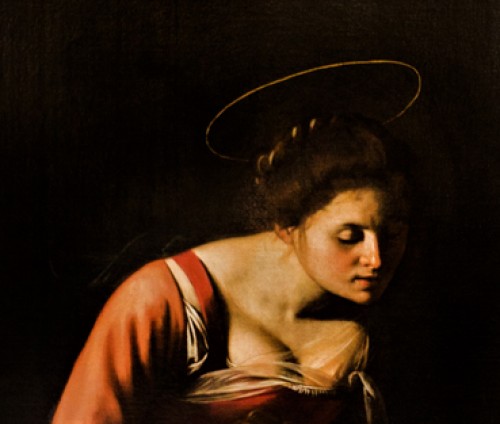
Caravaggio, Madonna and Child with St. Anne (Madonna dei Palafrenieri), fragment – The Virgin Mary, Galleria Borghese
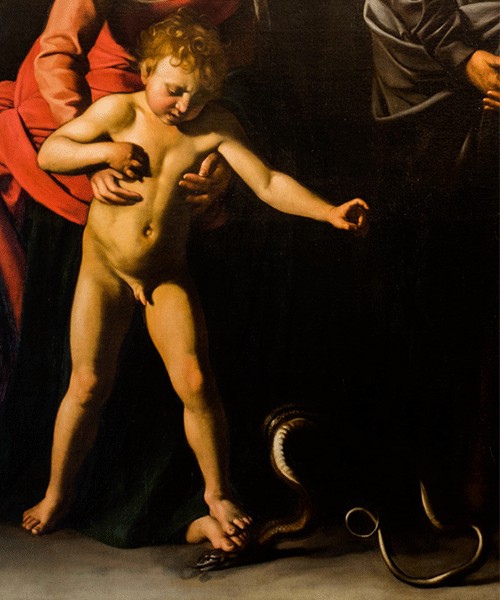
Caravaggio, Madonna and Child with St. Anne (Madonna dei Palafrenieri), fragment – Baby Jesus, Galleria Borghese
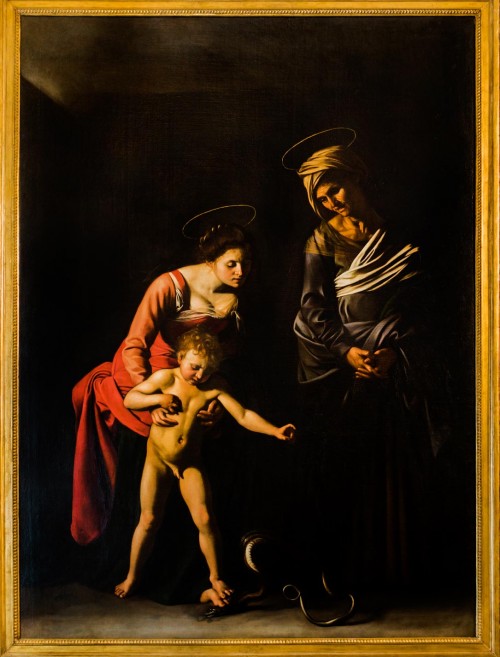
Caravaggio, Madonna and Child with St. Anne (Madonna dei Palafrenieri), Galleria Borghese
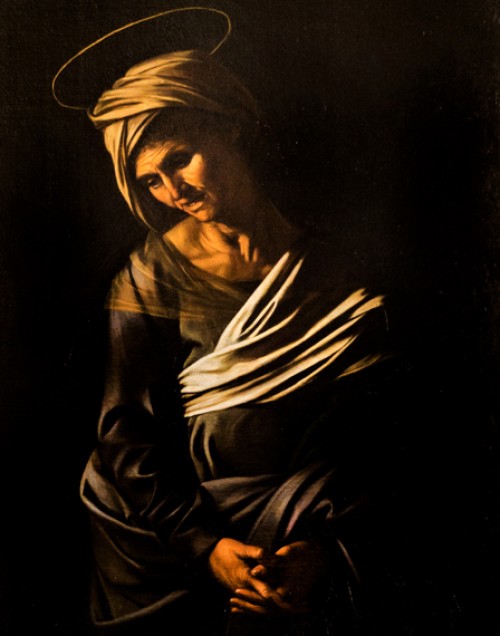
Caravaggio, Madonna and Child with St. Anne (Madonna dei Palafrenieri), fragment – St. Anne, Galleria Borghese
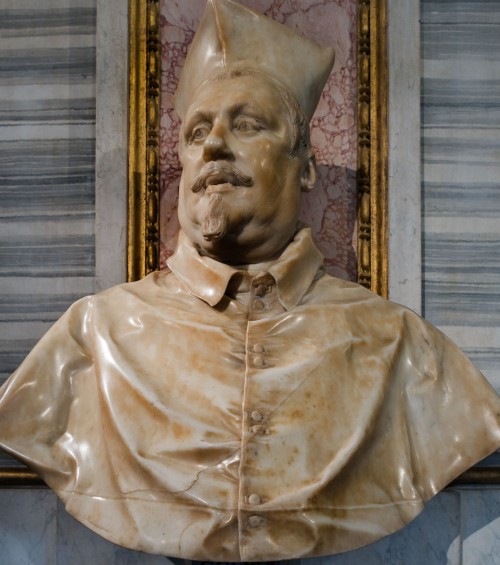
Bust of Scipione Borghese, Gian Lorenzo Bernini, Galleria Borghese
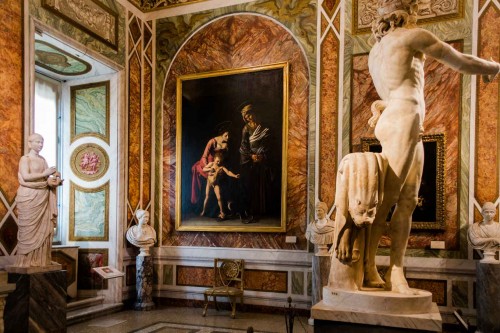
Room of Silenus with Caravaggio’s paintings, Galleria Borghese
This painting could have brought the artist acclaim, fame and riches, yet it was the beginning of his downfall. Pope Paul V despite Caravaggio’s much maligned reputation, due to his numerous fights and quarrels, valued his talent, which was continuously praised by the pope’s nephew, an expert in art, Scipione Borghese. Therefore, he ordered, from this renowned yet controversial painter a painting destined for the Chapel of the Archconfraternity of the Papal Grooms – the pope’s equerries (the title Madonna dei Palafrenieri, under which this work is known, is simply “Madonna of the Grooms”) in St Peter’s Basilica (San Pietro in Vaticano).
This painting could have brought the artist acclaim, fame and riches, yet it was the beginning of his downfall. Pope Paul V despite Caravaggio’s much maligned reputation, due to his numerous fights and quarrels, valued his talent, which was continuously praised by the pope’s nephew, an expert in art, Scipione Borghese. Therefore, he ordered, from this renowned yet controversial painter a painting destined for the Chapel of the Archconfraternity of the Papal Grooms – the pope’s equerries (the title Madonna dei Palafrenieri, under which this work is known, is simply “Madonna of the Grooms”) in St Peter’s Basilica (San Pietro in Vaticano).
It must be added that this type of a commission, destined for the most important church of the Christian world, was a great honor, a dignity, reserved only for the chosen few. However, the painting did not appeal to the pope and was also unanimously rejected by the papal grooms. What was it that caused such a reaction? Let us look at St. Anne, the patron of the brotherhood – does she not look like a simple, exhausted by hard work peasant-woman with a brown face, filled with wrinkles, wringing her hands at the frivolities of her grandson? What about the Virgin Mary, excluding the fact that the model the artist used was his lover and the courtesan Lena, does she not look like a caring mother, one of many who were at that time seen on the streets of Rome? At the same time she is not bereft of charm, or even a certain frivolity in dress, which puts her more among well-dressed laundry women rather than saints. Even if we ignore the fact, that Christ was completely nude on the painting, even though he is just a baby in the image, we must unanimously agree, that the opportunity of his life, which Caravaggio had, at the moment of obtaining the pope’s commission, was utterly wasted. The scene is somewhat saved by nimbuses of holiness but in reality only they seem to put this painting among a group of paintings of saints. One of the secretaries of a cardinal described it in such a way: “In this painting we see nothing but vulgarity, blasphemy, ungodliness, and abomination. It would seem that it is a work of a painter, who while he knows his craft, has a soul which is filled with darkness, since for a long time he has lived separated from God and all pure thoughts.”

Where is the mystery of the immaculate conception, where is the holiness of grace given by God to man, where is the struggle with Satan, which Christ wins trampling evil, or his mother which erases the original sin? If all of this is indeed in this painting then nobody had noticed it, or perhaps did not understand the painter’s intentions, concentrating on naturalism of representation. This is well illustrated by the detail depicting the trampling of the snake by Jesus – in this task he is in a decisive way aided by the Virgin Mary. She is the one who presses the foot of her baby, while his face is filled with disgust perhaps unwillingness. This motif aroused the emotions of theologians and was a topic of discussion between Catholics and Protestants – the former claimed that earthly evil was vanquished by the Virgin Mary together with Christ, the latter that it was the doing of Christ alone. A papal bulla was even issued because of this argument.

The unconventional composition of the painting also had to give rise to aversion – the tremendous size of the canvas does not correspond with an almost intimate scene, hidden in the darkness of some cell with dirty walls. In this way Caravaggio argues with Leonardo da Vinci and his full of grace and virtuosity group The Virgin and Child with St. Anne, situated in the foreground of an idealized landscape and fit into the ideal shape of a triangle. In Caravaggio’s painting we will not find any attempts to charm the viewer – his vision is brutal, created despite compositional principles, chaotic, modern and esthetically difficult.
It was Caravaggio’s last painting in Rome. The failure of fulfilling the pope’s commission and widespread criticism, pushed the artist deeper and deeper into drunkenness and quarreling. When he became a murderer, he was sentenced to death. He saved himself by fleeing Rome, and never returned. The altarpiece was on the altar for a mere few days. When Caravaggio was made an outlaw, the Archconfraternity of the Papal Grooms, sold his work for a ridiculously low sum of one hundred scudos. It was bought by none other than the papal nephew, fascinated with the painting of this artist – Cardinal Scipione Borghese and until this very day it is found in the gallery which he created (Galleria Borghese).
Madonna and Child with St. Anne (Madonna dei Palafrenieri), Caravaggio, 1605, 292 x 211 cm, Galleria Borghese















